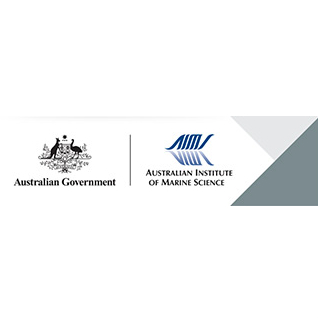Brief description
This study was carried out along 2 transects to give wide geographical coverage of the Great Barrier Reef: a central cross-shelf transect comprising a reef on the inner-shelf (Pandora Reef), mid-shelf (Davies Reef) and outer-shelf (Myrmidon Reef) shelf; and a latitudinal transect of pairs of reefs on the mid-shel and outer-shelf - McGillivray and Yonge (15°S), Davies and Myrmidon (19°S), and Heron and One Tree Islands (25°S). Habitats sampled within reefs were the mid-reef flat (Zone 4), back-reef crest (Zone 7) and reef slope (Zone 8); with 3 replicate sites (a, b, c) in Zones 7 & 8 on 6 reefs (all but Pandora).Coral plates (8 x 8 x 2 cm cut from Porites spp., 4 plates each site, 12 per zone) were sampled to measure their algal community structure, biomass and productivity in August (winter) and October (spring) 1986, and February (summer) and May (autumn) 1987 on the cross-shelf reefs, and from the latitudinal reefs in February 1988 and July-August 1988.Visual estimates (percent cover) of the epilithic algae community on the entire upper surface of each plate was recorded in 4 categories: fine turf (Algal productivity was measured by oxygen flux from 24 h deployments of 3 in situ respirometers conducted so that different zones on a particular reef were compared simultaneously. Metabolism was measured by dark respiration rate, photosynthesis-irradiance (P-I) relationships, and die1 productivity.Plates were dried, measured for surface area, and scrapings were analysed for total organic C as the measure of biomass.The type and irregularity of the reef surface were surveyed at Pandora, Myrmidon, Heron and One Tree Reefs in October 1989, and at MacGillivray and Yonge Reefs in December 1989. Reef surface type was quantified using line transects to record proportional cover by sand and functional groups of biota: fine turf, damselfish-territory turf, crustose coralline algae, encrusting brown algae, macroalgae (e.g. Halimeda spp.), hard corals, and other fauna (e.g. soft corals, sponges). Four replicate transects of 30 m each were surveyed at each site (12 transects per zone) for all reefs except Heron Is. and One Tree Is., which had 2 replicates per site (i.e. 6 transects per zone). Data for Davies Reef was derived from a previous study (see separate metadata record).The topographic surface area of the reef was estimated using chain (1 cm links) transects. A 3 m length (C) of chain was run in a straight line across the reef surface contour, then the direct distance between the chain ends was measured (H) to enable calculation of a surface irregularity factor (IF, the ratio of C to H). Topographic area, which was used to calculate EAC p This research was undertaken to examine seasonal and annual variations in community structure, biomass, photosynthesis-irradiance relationships and primary productivity of epilithic algal communities in different habitats on reefs located across and along the continental shelf within the Great Barrier Reef.Data on primary production of the EAC were compared with the rugosity and nature of the reef substratum to estimate the contribution made by epilithic algal communities to whole reef productivity. Epilithic algal communities include coralline algae, turf algae (filamentous forms and thick turfs), corallines mixed with short turf.An extension of a study which focussed on differences between habitats and seasons within a single reef (see separate metadata record).Lineage
Maintenance and Update Frequency: notPlannedNotes
CreditKlumpp, David W, Dr (Principal Investigator)
Modified: 17 10 2024
text: westlimit=147.649751; southlimit=-18.819741; eastlimit=147.649751; northlimit=-18.819741
text: westlimit=145.49069; southlimit=-14.65062; eastlimit=145.49069; northlimit=-14.65062
text: westlimit=147.38923; southlimit=-18.266752; eastlimit=147.38923; northlimit=-18.266752
text: westlimit=146.429285; southlimit=-18.813375; eastlimit=146.429285; northlimit=-18.813375
text: westlimit=145.62303; southlimit=-14.59915; eastlimit=145.62303; northlimit=-14.59915
text: westlimit=151.912792; southlimit=-23.440943; eastlimit=151.912792; northlimit=-23.440943
text: westlimit=152.090793; southlimit=-23.508118; eastlimit=152.090793; northlimit=-23.508118
Community structure, biomass and productivity of epilithic algal communities on the Great Barrier Reef: dynamics at different spatial scales: Klumpp DW and McKinnon AD (1992) Community structure, biomass and productivity of epilithic algal communities on the Great Barrier Reef: dynamics at different spatial scales. Marine Ecology Progress Series 86:77-89.
local : articleId=2465
- global : 0d5ed6bd-7887-4d8a-9653-b76b50be298f


